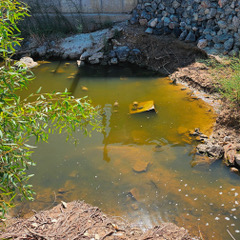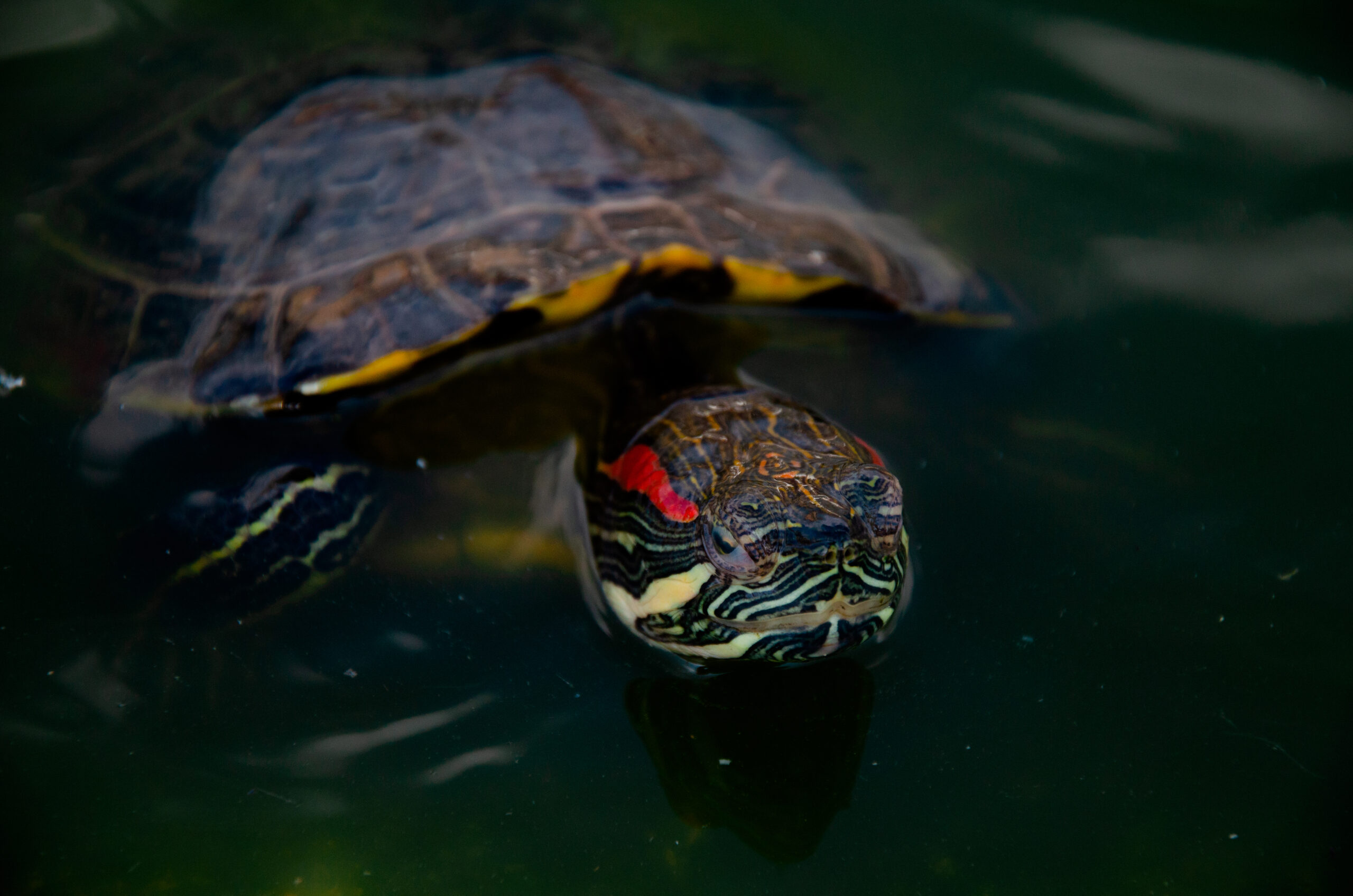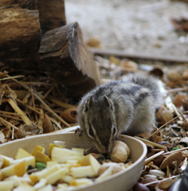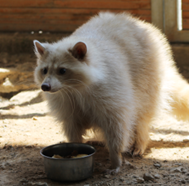19 February 2025, By Dominika Knazovicka

Exotic pets have become increasingly popular worldwide, providing educational value, companionship, and unique experiences. However, this growing trend comes with a significant cost: the pet trade has become a leading driver of native wildlife declines when non-native species escape or are released, turning into invasive threats. On islands like Cyprus, where unique endemic species thrive, these invasions can be catastrophic, wiping out native wildlife and permanently altering delicate habitats. The stakes are high—urgent action is needed to promote responsible pet ownership, enforce stricter regulations, and prevent these ecological disasters before they fully unfold.
The Dual Impact of Exotic Pet Ownership
Keeping exotic animals as pets is a widespread practice driven by companionship, stress relief, and education. These creatures undeniably spark curiosity and foster appreciation for wildlife and conservation. For many, exotic pets are more than just animals—they inspire interest in distant fauna and careers in fields like veterinary medicine or conservation.
But behind this fascination lies a stark reality: escaped or released pets can turn into invasive species, unleashing a devastating cascade of effects that often lead to irreversible damage to ecosystems, economies, and even human health.
Understanding Invasive Species
Invasive species are organisms introduced outside their native range that pose threats to biodiversity and human health (CBD 2002). Europe alone hosts over 10 000 alien species, with 15% significantly disrupting ecosystems or economies (EEA 2020). While not all non-native species become invasive, those that do pose immense challenges.
Exotic pets often enter new areas through intentional releases or accidental escapes, and some have potential to become invasive. The owners may set animals free due to factors like lifestyle changes, unwanted behaviour, or animals outgrowing available housing (Reaser & Meyers 2007). Additionally, misguided ecological interventions, such as introducing Cane Toads to Australia (Shine 2010) or cultural practices like releasing prayer animals (Magellan 2019) can also unintentionally lead to the establishment of alien species.
The Devastating Impact of Invasive Species
● Biodiversity Loss: Invasive species are among the leading causes of biodiversity loss worldwide, contributing to 60% of worldwide extinctions (IPBES 2023). In Europe, nearly one-third of the 395 critically endangered species are threatened by invasive alien species (EEA 2020). Commonly recognized mechanisms are competition for resources, predation, the spread of diseases and parasites, hybridization with native species, and habitat destruction.
● Economic Damage: The damage isn’t limited to nature. Invasive species disrupt agriculture and aquaculture, lower property values, and damage infrastructure. They increase forest fire risks and drive up costs for management and eradication efforts.
● Human Health Risks: Invasive animals can be toxic, transmit diseases, or cause physical harm to humans and domestic animals.

Islands like Cyprus, with their isolated ecosystems and high rates of endemism, are especially vulnerable. Shockingly, 86% of global island extinctions are linked to invasive species (Bellard et al., 2016), underscoring the urgency of action.
Understanding Invasive Species
Cyprus faces its own battles with invasive species. The highly competitive Red-eared Sliders, venomous Lionfish, and disruptive Red Swamp Crayfish are just a few examples of alien species that were once kept in captivity but now threaten entire ecosystems. Additionally, new threats are emerging, such as the highly invasive Common Myna or the Rose-ringed Parakeet, both of which were introduced to Europe following their escapes from captivity.
In response to the growing threat of invasive species, Cyprus has implemented EU Regulation 1143/2014/EC, restricting the trade, breeding and import of listed invasive species and establishing early detection and monitoring systems. Beyond EU regulations, the CY.I.A.S. database has been established, tracking the distribution of invasive species on the island, aiding research and policymaking (Martinou et al., 2020). However, political challenges complicate these efforts, leaving gaps in enforcement and coordination.
Despite the efforts, the battle continues…
While completely eradicating all invasive species from our island may be unrealistic, proactive measures can prevent further introductions. Individuals can make a significant impact by educating themselves about native and exotic species, understanding the ecological consequences of invasive fauna, and practicing responsible pet ownership—never releasing exotic pets into the wild. However, the policymakers must take a leading role by strengthening laws that regulate exotic pet ownership and trade, implementing early detection programmes, and offering incentives for managing invasive populations. Island-wide cooperation will be crucial for successful monitoring and data-sharing, ensuring a unified approach to protecting our island’s biodiversity.
Final Thoughts
Cyprus, a jewel of biodiversity in the Mediterranean, is home to species found nowhere else on Earth. This remarkable biodiversity also makes the island particularly vulnerable to invasive species, emphasizing the urgent need for decisive and sustained action. Though we cannot undo the damage already caused, we can take meaningful steps to minimize further harm by promoting individual responsibility, strengthening regulations, and ensuring effective interventions. The choices we make today will determine whether future generations inherit a thriving island or one scarred by lost biodiversity.

Highly invasive Red-eared Sliders have established multiple breeding populations across Cyprus. Species originates from pet trade and is considered one of the worst invasive species in the world. In Cyprus, Red-eared Sliders compete with the native Balkan Terrapin (Mauremys rivulata). These invasive turtles outcompete locals by dominating basking spots, food resources, and habitats.

Confiscated due to its illegal origin, this Siberian Chipmunk now has a safe, permanent home at Taşkent Nature Park. As an invasive species, its import, breeding, and trade are prohibited across the EU.

This leucistic Raccoon, with its unique coloration, was kept as a pet in Cyprus despite import, breeding, and sale bans since 2016. As a highly invasive species, raccoons have established populations in several European countries.
References
Bellard, C., Cassey, P., & Blackburn, T.M. (2016). Alien species as a driver of recent extinctions. Biology letters, 12(2), 20150623.
CBD (Convention on Biological Diversity). 2002. Alien species that threaten ecosystems, habitats or species Decision VI/23. The Conference of the Parties, Hague. Available from https://www.cbd.int/decision/cop/?id=7197 (accessed December 2024).
EEA (European Environment Agency). 2020. Invasive alien species: a growing problem for environment and health. Available from:
https://www.eea.europa.eu/ds_resolveuid/65520fa059cc4333a93ddea662bf4fee
IPBES (2023). Summary for Policymakers of the Thematic Assessment Report on Invasive Alien Species and their Control of the Intergovernmental Science-Policy Platform on Biodiversity and Ecosystem Services. Roy, H.E., Pauchard, A., Stoett, P., Renard Truong, T., Bacher, S., Galil, B.S., Hulme, P.E., Ikeda, T., Sankaran, K.V., McGeoch, M.A., Meyerson, L.A., Nuñez, M.A., Ordonez, A., Rahlao, S.J., Schwindt, E., Seebens, H., Sheppard, A.W., & Vandvik, V. (eds.). IPBES secretariat, Bonn, Germany.
Krysko, K.L., Enge, K.M., Donlan, E.M., Seitz, J.C., & Golden, E.A. (2007). Distribution, natural history, and impacts of the introduced green iguana (Iguana iguana) in Florida. Iguana, 14(3), 142–151.
Lockwood, J.L., Welbourne, D.J., Romagosa, C.M., Cassey, P., Mandrak, N.E., Strecker, A., … & Keller, R. (2019). When pets become pests: the role of the exotic pet trade in producing invasive vertebrate animals. Frontiers in Ecology and the Environment, 17(6), 323–330.
Martinou, A., Pescott, O., Michailidis, N., Zenetos, A., Jenna Wong, L., Pagad, S. (2020). Global Register of Introduced and Invasive Species – Cyprus. Version 1.9. Invasive Species Specialist Group ISSG. Available from https://doi.org/10.15468/uryl57. (accessed December 2024).
Magellan, K. (2019). Prayer animal release: An understudied pathway for introduction of invasive aquatic species. Aquatic Ecosystem Health & Management, 22, 452–461.
Reaser, J.K., & Meyers, N.M. (2007). Habitattitude: Getting a backbone about the pet release pathway. Managing Vertebrate Invasive Species, 40, 63–71.
Shine, R. (2010). The ecological impact of invasive cane toads (Bufo marinus) in Australia. The Quarterly review of biology, 85(3), 253–291.



